Full STEAM Ahead with Geoboards!
“Look what I made!” shouts Parker.
Our moment of silent concentration and focus is interrupted by Parker ecstatically showing off her geoboard.
“You made a house?” asks Linnea, looking a little wide-eyed and confused. “How did you do that?”
“I just added shapes and it worked!” Parker answers, equally amazed by her own creation.
“I want to try that!” shouts Rowen.
“Me too!” echoes a chorus of four-year-old voices. “Show us how you did that!”![]()
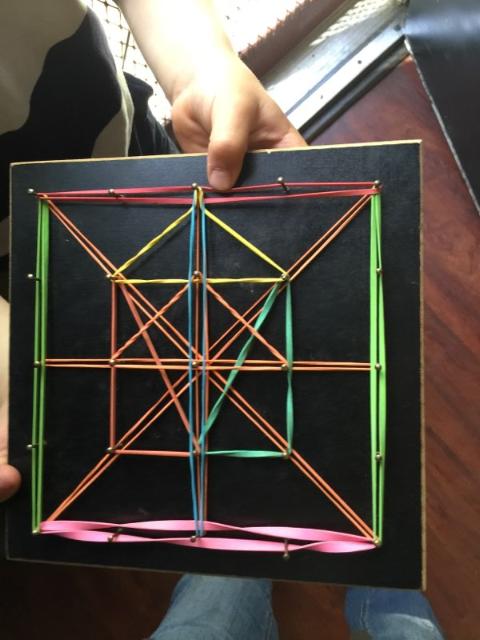
Geometry has entered our world today—and what better way to learn about early math and science concepts than through play?
I have come to believe that geoboards are one of the ultimate learning tools for peer mentoring. I watch as the four-year-olds follow Parker’s example and create their own versions of her rubber-band house.
I am a huge fan of these little powerhouses known as geoboards. Hands-on activities with these simple learning tools get children’s brain synapses firing like crazy and stimulate the development of new neural connections.
The boards, with their colorful rubber bands and infinite possibilities, also make math and engineering fun!

Our geoboard play tends to occur in cycles. Today, the geoboards have resurfaced after long hiatus.
Because the children haven’t used the geoboards in a while, I notice how much their brains have developed since the last time the boards were in play. Seeing these leaps of brain development is one of the great joys of teaching.
Geoboards are always developmentally appropriate in the hands of the creator. Some children simply work on stretching the rubber bands onto the nails. My “artsy” early learners—who are happy designing anything and everything—can play with these boards for hours. And there’s a child in every class who insists on attaching every single rubber band in the bag to the geoboard, persisting long after the other children have moved on to new activities.
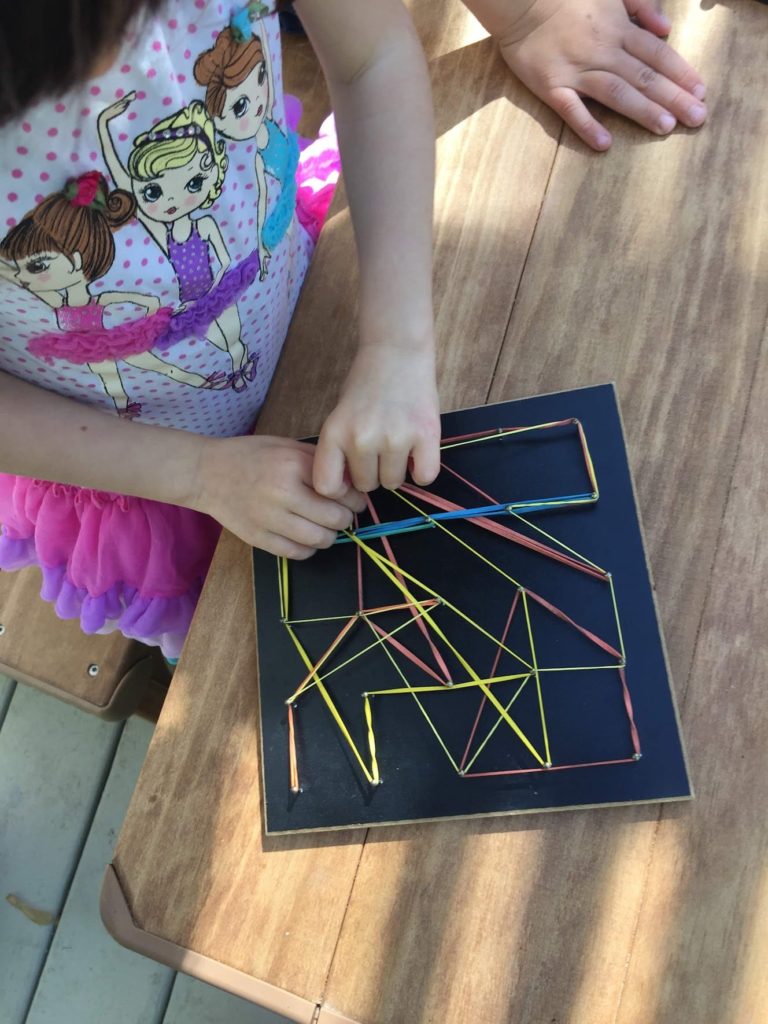
Geoboards enable even young children—and those who may have difficulty drawing shapes—to construct and investigate the properties of early geometry without a pencil in their hands.
I see geoboards as a chance to level the playing field for those who struggle with grasp, fine-motor or visual-motor skills.
Children begin to notice shapes before they have the language to name those shapes. Geoboard play acquaints children with simple shapes—as well as more advanced concepts such as symmetry, angles and fractions—as they engage in activities such as measuring, counting or investigating 2D shapes like Parker’s rubber-band house.
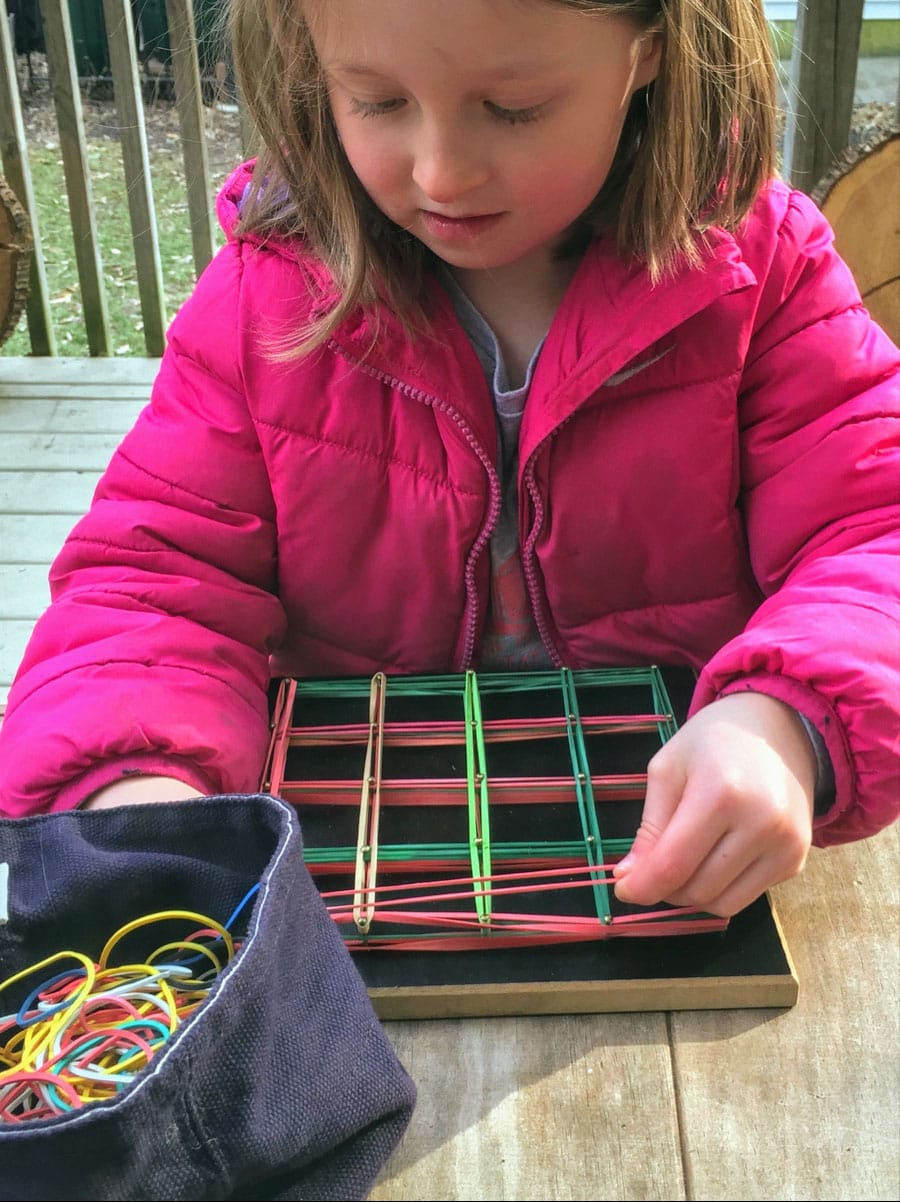 Look at those little fingers and hands going to work! With just one geoboard and a bagful of rubber bands, children can create and learn about shapes while developing their hand muscles, fine-motor skills, spatial skills and math skills. This is why geoboards have been a part of our classroom curriculum for more than 30 years.
Look at those little fingers and hands going to work! With just one geoboard and a bagful of rubber bands, children can create and learn about shapes while developing their hand muscles, fine-motor skills, spatial skills and math skills. This is why geoboards have been a part of our classroom curriculum for more than 30 years.
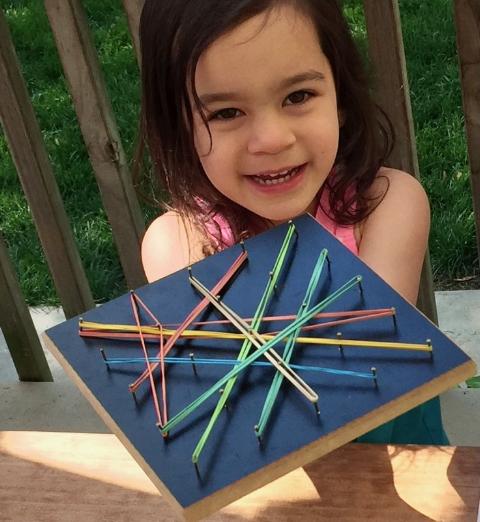
Children can use their rubber bands to create squares, rectangles, triangles and other “sided” shapes. They can also explore number concepts as they try to stretch a single rubber band around a certain number of pegs. They may try to stretch it around three or four pegs—or maybe even all of the pegs. This early math exploration evolves quite naturally as the children engage in geoboard play with their friends.
When I introduce geoboards to new students, I leave the lesson plans and benchmark checklists for later and let the children simply play with their boards. I want them to engage in geoboard play at their own level of development.
It’s important to give the children ample time to engage in this process. It can’t be rushed. For my young learners who love to make shapes, letters and designs, a longer play period gives them time to get their creative juices flowing. As their brain development continues, you will see their shapes and designs become more intentional.
Young children develop ideas and concepts about science, technology, engineering, art and mathematics (STEAM) naturally. They think about size, shape, quantity, order and speed throughout the day as they play and explore. As teachers of young children, we need to tap into their natural curiosity with intentional STEAM learning opportunities such as geoboard play.
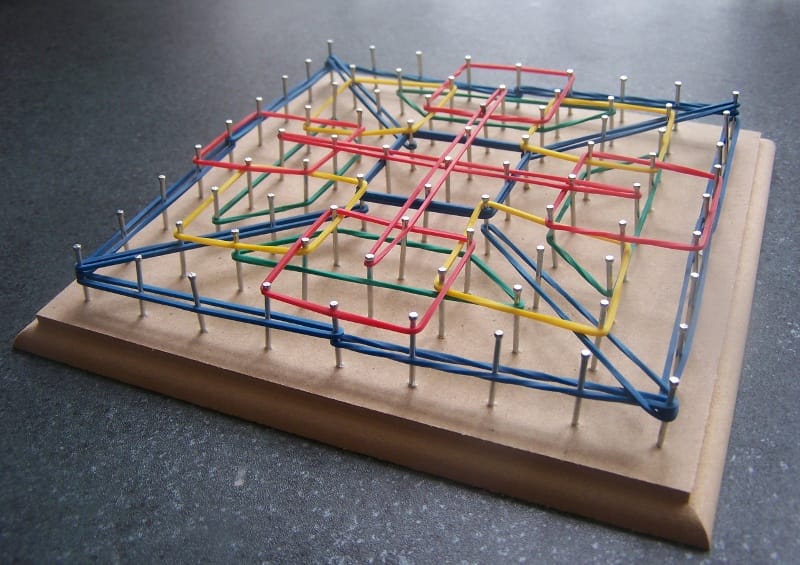
Intentionality is acting with knowledge and purpose. It is the opposite of chance because it is planned and thoughtful. In order to become intentional about math teaching, we need to think about math the way we think about literacy.
By making shapes on their geoboards, the children are actually developing important pre-reading and pre-writing skills too.
Here’s how it works: When Linnea sees a shape on the geoboard and names it, she is preparing herself to identify letters and numbers and then naming and eventually writing them.
Simply by placing a basket full of geoboards near a table, we can encourage children to experiment with shapes, sizes and direction through hands-on play.
We can call this math, science, engineering, art or literacy because it’s laying the groundwork for the STEAM disciplines, as well as language development.
But in our hearts—as early childhood educators—we simply call it play.
![]()